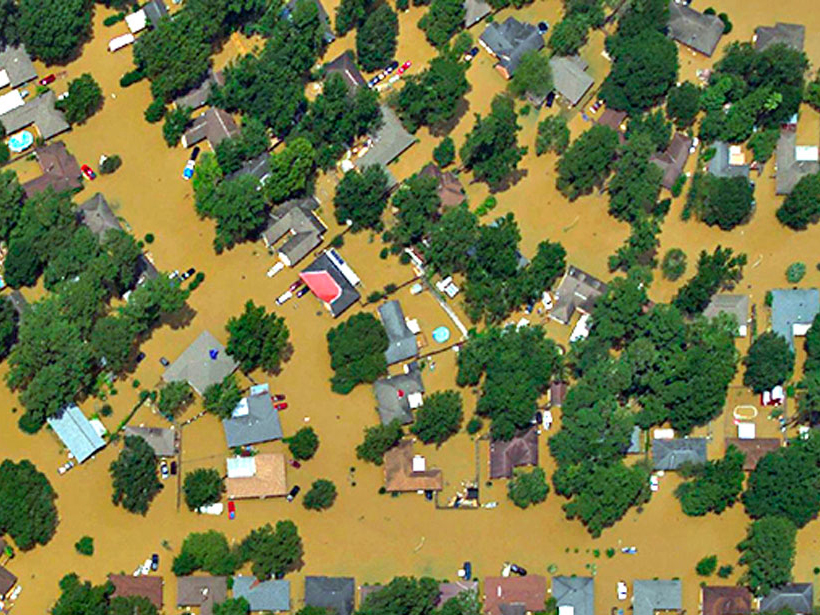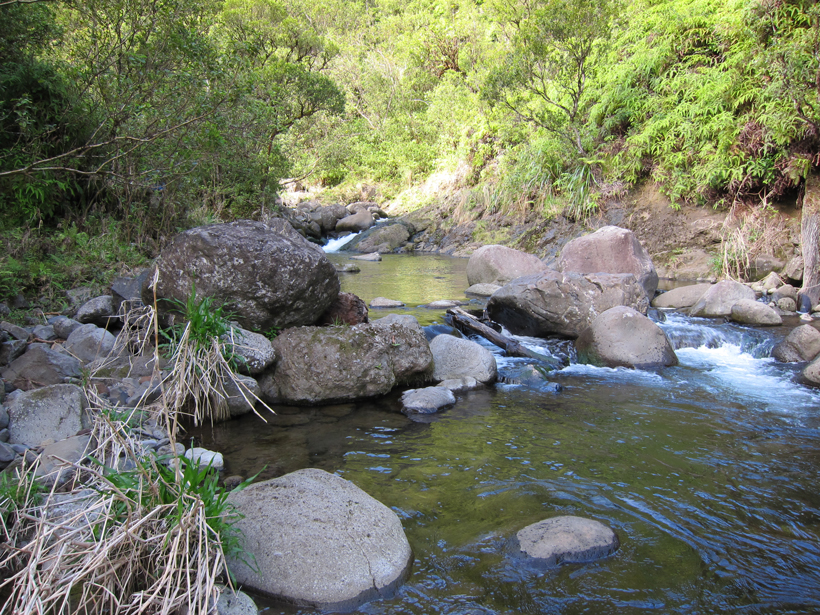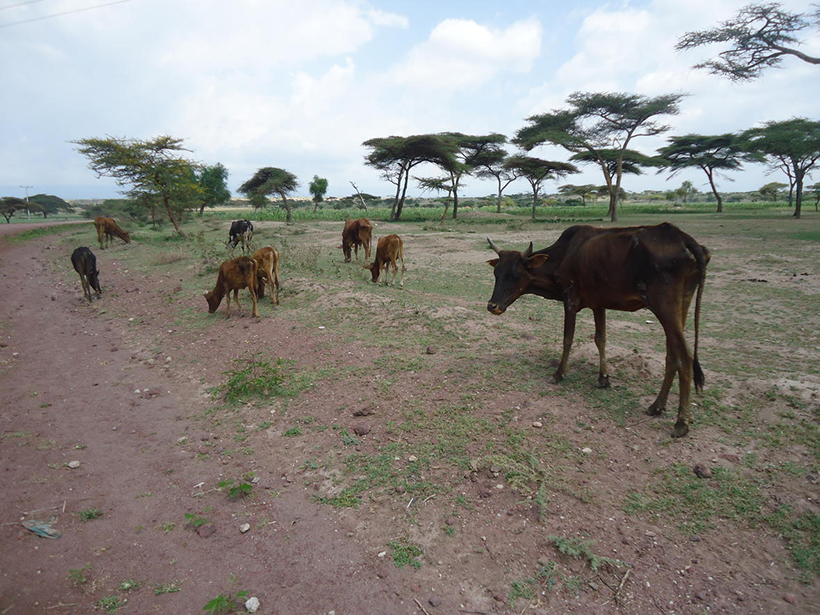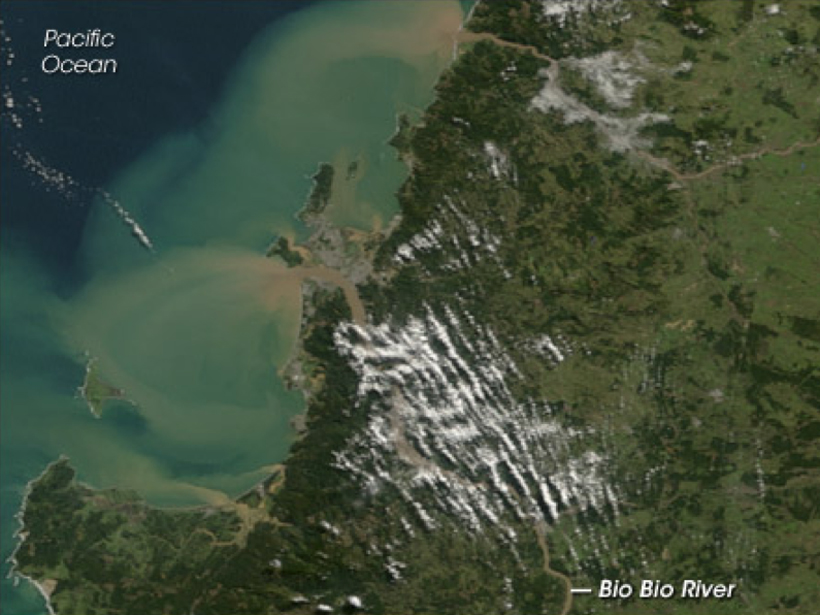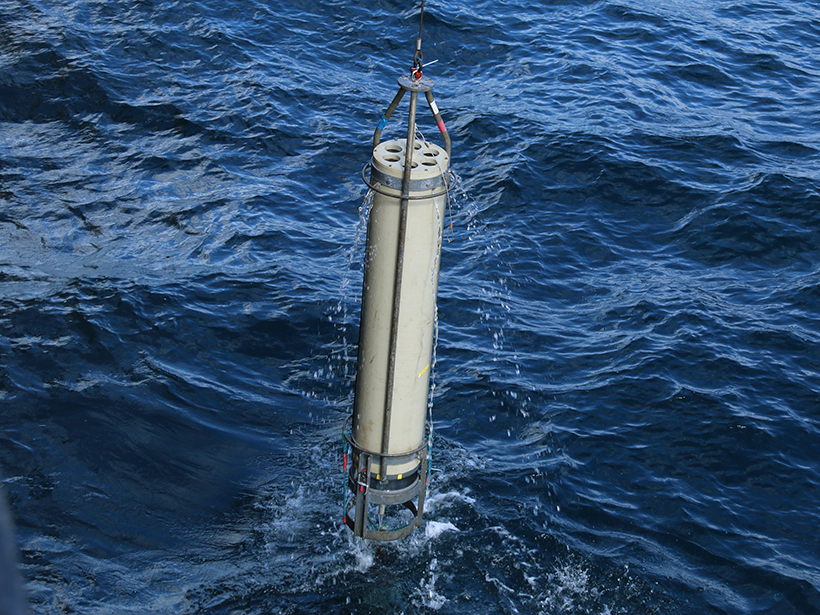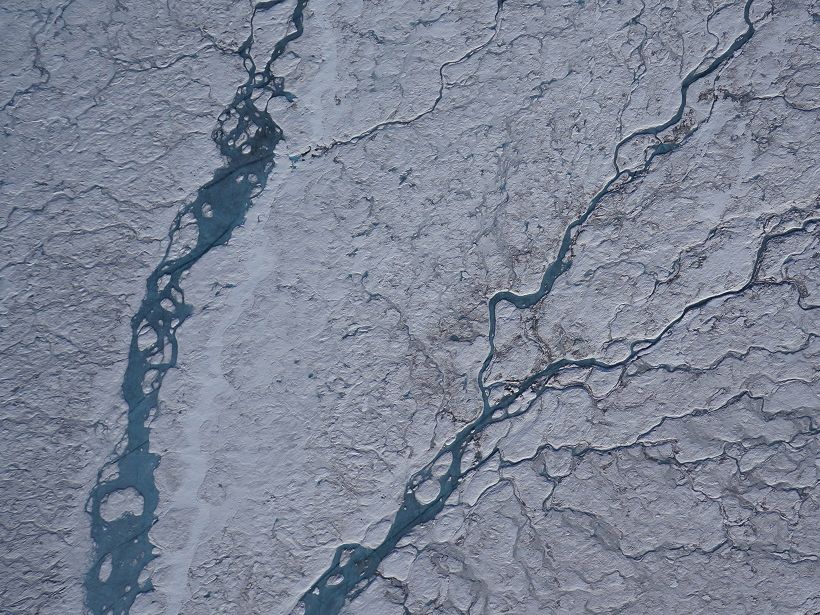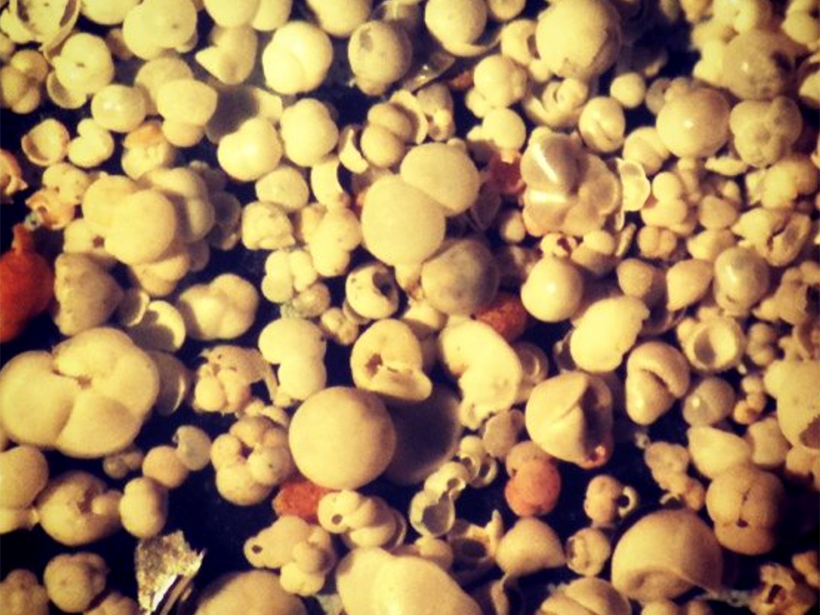New modeling approach reexamines two key assumptions about flooding.
Research Spotlights
Research spotlights are plain-language summaries of recent articles published in AGU’s suite of 24 journals.
Detecting Gas Leaks with Autonomous Underwater Vehicles
A Norwegian team develops an improved, cost-effective method to detect chemical discharges under the sea.
What Controls the Shape of Steep Mountain Streams?
The shape of steep river streams changes systematically with channel slope, but field data and theoretical analysis reveal that slope is not the sole factor in setting a channel’s form.
How Can We Best Manage Shared Resources?
Researchers develop a mathematical model to shed light on the social, economic, and ecological challenges of governing resources such as fisheries, forests, grazing lands, and the atmosphere.
Tracing Land to Ocean River Transport with Cosmogenic Isotopes
Beryllium stored in marine sediments can help scientists study erosion and other environmental changes.
New Evidence Challenges Prevailing Views on Marine Carbon Flux
Small, slow-sinking organic particles may play a bigger role than previously thought in the transport of carbon below the surface ocean.
New Data Record Extends History of Global Air Pollution
Researchers extend long-term aerosol records to the past 40 years by combining two existing algorithms to process satellite data over both land and sea.
Coastal Wetlands Effectively Sequester “Blue Carbon”
Mangrove forests, salt marshes, seagrass beds, and the like are carbon storage treasure troves.
On-the-Ground Measurements Overestimate Earth’s Albedo
Weather stations can be used to calibrate and validate albedo measurements from satellites, but they fail to account for variability across landscapes, overestimating how reflective our planet is.
Improving Our Understanding of El Niño in a Warm Climate
A new study seeks to bring together the strongest features of proxy data and climate models to reduce uncertainties in reconstructions of past El Niño behavior.

